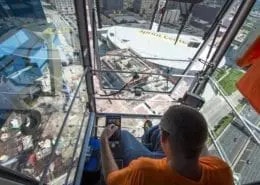Why We Measure Wind: Understanding the Purpose of an Anemometer
Wind has always influenced how people live, build, and protect their communities. Yet it remains invisible without the right tools. Anemometers turn

Address
2170 Carpenter Street Abbotsford, BC V2T 6B4
Wind has always influenced how people live, build, and protect their communities. Yet it remains invisible without the right tools. Anemometers turn
An anemometer might seem like a device reserved for scientists or meteorologists, but it has a practical role in daily
Measuring wind has always been a human need, from guiding sailors at sea to protecting modern cities during storms. Anemometers make this
Wind has always shaped how people live, travel, and plan their daily activities, yet understanding it fully depends on accurate
The invention of the anemometer gave meteorologists a tool that could measure wind speed and direction accurately, turning weather forecasting
Wind plays a quiet role that many people overlook, yet it shapes daily work in construction sites, transport systems, farms,

BEIJING The Latest on Typhoon Hato (all times local): 12:20 p.m. The death toll from Typhoon Hato has risen to

Three workers were injured when the crane fell, with the construction union condemning the incident as “not good enough”. Two

Perched high above a Children’s Mercy Hospital construction site, Carl Potter gently moves his left wrist and the 100-plus-foot tower

Though many unfortunate factors can result in aviation accidents, among an aircraft’s greatest threats are ice, fog and wind shear,